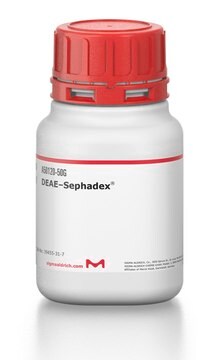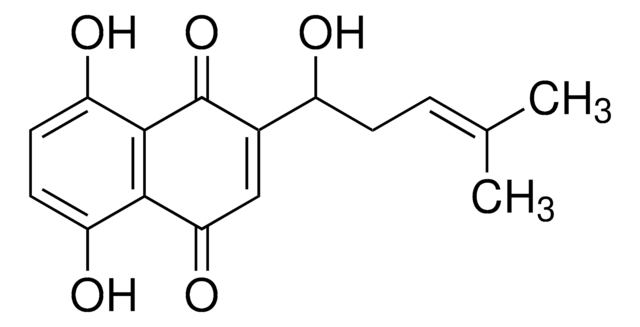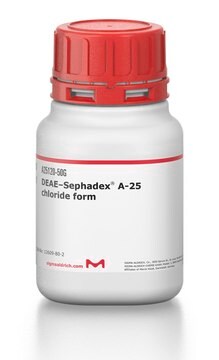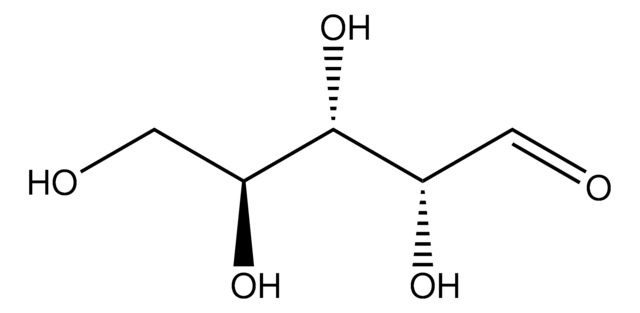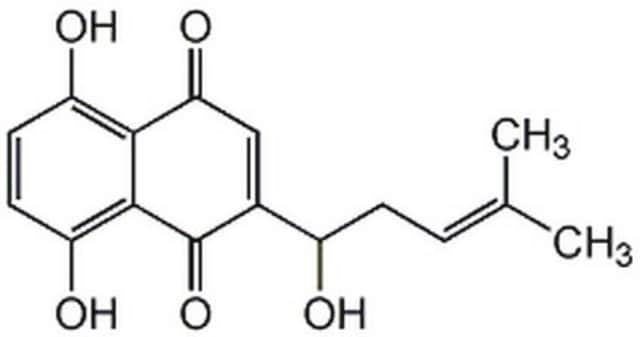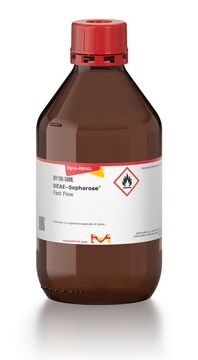B6385
Benzoylated Naphthoylated DEAE–Cellulose
medium
Sign Into View Organizational & Contract Pricing
All Photos(1)
About This Item
Recommended Products
Application
Benzoylated Naphthoylated DEAE-cellulose is a cellulose medium used in protein chromatography, ion exchange chromatography and anion exchange media. Benzoylated Naphthoylated DEAE is particularly useful for the separation of single and double stranded DNA. Benzoylated Naphthoylated DEAE has been used to design a more efficient approach for the detection of human papillomavirus DNA and to study the cytotoxcity of the drug 5-Fluorouracil (FUra).
Preparation Note
Prepared by the method of Gillam et al., Biochemistry, 6, 3043 (1967).
Storage Class
11 - Combustible Solids
wgk_germany
WGK 3
flash_point_f
Not applicable
flash_point_c
Not applicable
Choose from one of the most recent versions:
Already Own This Product?
Find documentation for the products that you have recently purchased in the Document Library.
J D Schuetz et al.
Cancer chemotherapy and pharmacology, 21(3), 208-210 (1988-01-01)
5-Fluorouracil (FUra) was previously demonstrated to be incorporated into DNA at cytotoxic concentrations in mouse bone marrow cells. Subsequently, we showed that under these conditions FUra exhibited a time-dependent removal from DNA accompanied by a decrease in DNA strand length.
R M Knobler et al.
Clinical and experimental dermatology, 17(6), 392-396 (1992-11-01)
Using the benzoylated naphthoylated DEAE cellulose method (BND-method) we have designed a more efficient approach for the detection of human papillomavirus-DNA (HPV-DNA) via dot-blot and hybridization. Biopsy material from anogenital warts (40 patients), invasive carcinoma uteri (12 patients) and normal
A N Koterov et al.
Biokhimiia (Moscow, Russia), 57(2), 195-200 (1992-02-01)
Single-stranded DNA-binding proteins (SSB-proteins) isolated from Ehrlich ascites tumour (EAT) cells were incubated for 30 min at 5 mM NaCl with salmon sperm DNA or [3H]DNA from EAT at the SSB-protein/DNA ratio (w/w) of 0 to 4.5. After addition of
Ana Teixeira-Silva et al.
Nature communications, 8(1), 1982-1982 (2017-12-08)
Replication requires homologous recombination (HR) to stabilize and restart terminally arrested forks. HR-mediated fork processing requires single stranded DNA (ssDNA) gaps and not necessarily double strand breaks. We used genetic and molecular assays to investigate fork-resection and restart at dysfunctional
Bo-Ruei Chen et al.
The Journal of cell biology, 218(7), 2113-2123 (2019-05-28)
XRCC4-like factor (XLF) is a non-homologous end joining (NHEJ) DNA double strand break repair protein. However, XLF deficiency leads to phenotypes in mice and humans that are not necessarily consistent with an isolated defect in NHEJ. Here we show that
Our team of scientists has experience in all areas of research including Life Science, Material Science, Chemical Synthesis, Chromatography, Analytical and many others.
Contact Technical Service